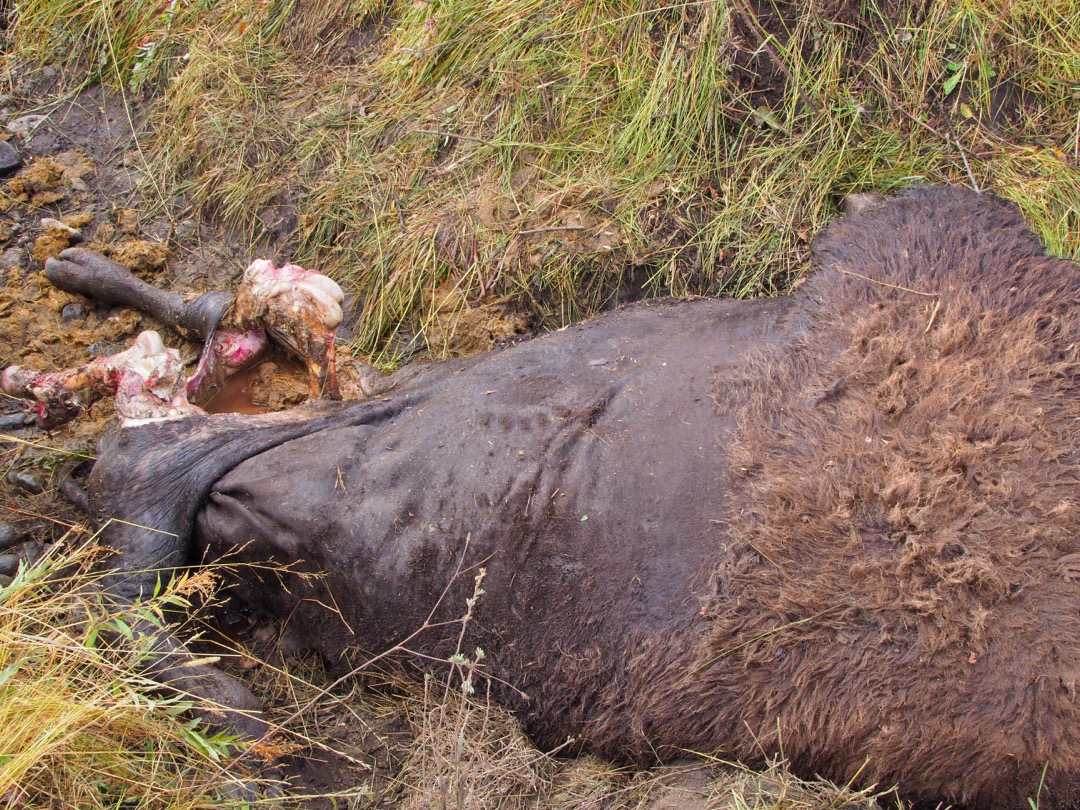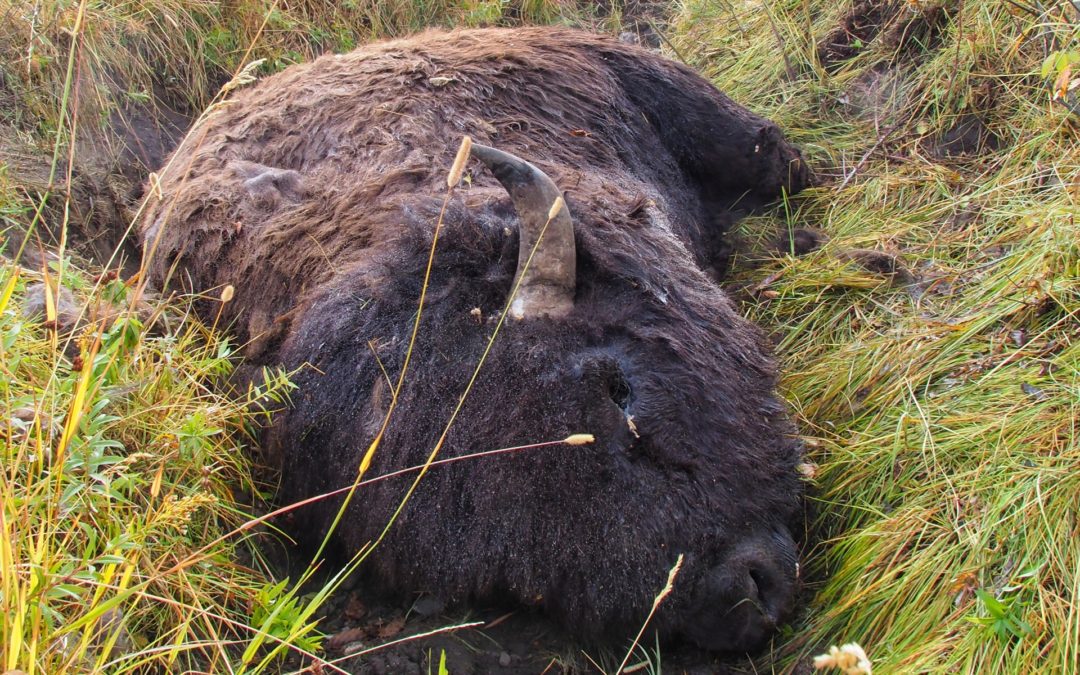There wasn’t anything on the carcass (thank goodness), so we took just a few moments to snap a couple of quick photos before hightailing it out of there. It looked as if the bison had died in the wallow George first spotted the track in (it turned out to be coyote track), and that the carcass had rolled down the slope, perhaps as a bear was feeding on it. Knowing that there was a bear nearby, and that the smell of the carcass would travel far and wide, we quickly left, and climbed up to a bluff a half-mile away to scan for activity.

While we never did see a bear, we knew (at least) one was out there, and probably more to arrive in the coming days. A feast like that–with over a ton of flesh– is worth its weight in gold for a bear trying to put on weight before hibernation. We did see a coyote come in warily, cautious of feasting where it couldn’t see approaching threats.
Despite doing everything right – hiking in a group of four, chatting and making noise, carrying bear spray, and watching our surroundings closely for signs of wildlife – we still accidentally walked up on a hidden bison carcass. It serves as a powerful reminder of how wild Yellowstone truly is, and why it’s so important to go prepared.
Read more about bear encounters with First Grizzly Bear, and Bear-Ly Aware: Deciphering Grizzly Sign.
Photos: Jenny Golding

